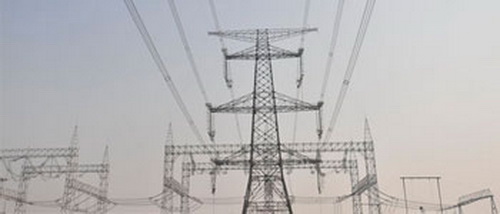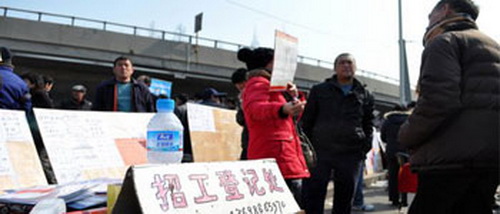

Highlights from the EO print edition, Issue Wrap No. 509, Mar 7, 2011
A Roadmap for Rebalancing Income Distribution
News, cover
~ Income distribution is one of the most discussed topics at this year's "two sessions." However, resolving this issue will not be easy. During the past decade, fiscal revenue has increased by over 20% a year and GDP over 10% per annum. However, incomes have only been increasing by between 6 and 8%.
~ The Chinese government hopes "to increase spending on benefits for residents while reducing the amount of money spent on government income and enterprises. It is difficult to cut down government income since it has so many fixed spending," said Gu Shengzu, an economisand NPC delegate.
~ In the past, the central government has talked about establishing an organization above the ministerial agencies to lead the reform. Officials also hope to achieve a larger middle class through tax reforms - lowering taxes paid by middle-and low-income earners and transfering more tax revenue to local governments.
Original article: [Chinese]
New Electric Power Construction Giants to be Established as Early as May
News, cover
~ Nine years since major reforms first split China's electricity production and distribution companies, the second step of the reform plan, which involves separating out the multiple minor lines of business from the core business of the country's power distrubutors, has been launched by State-owned Assets Supervision and Administration Commission (SASAC).
~ The secondary lines of business include everything from survey and design to repair and construction services.
~ More importantly, the integration and reorganization will create several dominant companies that will focus on the design and construction of power plant and equipment.
~ China Power Engineering Consulting Group Corporation and China Gezhouba Corporation will amalgamate into China Power Engineering Corporation.
~ China Hydropower Engineering Consulting Group Corporation, Sinohydro Corporation and a dozen of Southern Electric's construction companies will merge to form the China Electric Power Construction Group, which could be established as early as May this year.
~ The intention of the mergers is to build two globally competitive players, which fits with SASAC's broader plan of reducing the amount of companies under its control and strengthening large corporations.
Original article: [Chinese]
Central State-Owned Enterprises to Develop New Rare Earth Mines
News, page 4
~ China will once again begin to approve applications for developing new rare earth mines on June 30 and centrally-owned enterprises (COEs) are set to play a central role in the rare earth mining indusrty.
~ China Minmetals Corporation has signed a strategic cooperation agreement with Heyuan City in Guangdong Province and Chenzhou City in Hunan Province to develop rare earth resources.
~ Currently, mines in Jiangxi Province's Ganzhou city account for between 60 and 70% of China's rare earth output. However, more reserves are likely to be developed as China invests more in developing other mines.
Original article: [Chinese]
What's Driving the Recent "Labour Drought"
News, page 7
~ Labor shortages have existed in parts of China since last year, but new characteristics are beginning to emerge.
~ Firstly, labor shortages have spread from the eastern provinces to become a nationwide phenomenon. Such a severe shortage has pushed enterprises to raise salaries. It's estimated that the average salary of Chinese migrant workers increased by 20% last year.
~ Labor shortages, along with inflation, the increased cost of financing and stricter environmental requirements have replaced an appreciating currency as the biggest problem facing many Chinese compnies.
~ Cai Hang (蔡舫), Dean of the Chinese Academy of Social Science's Population Institute, has also predicted that the growth rate of the number of agricultural workers aged between 16 and 64 has already started to decline and will cease to increase by 2015.
Original article: [Chinese]
Special Feature: Interviews with Delegate to the Two Sessions
Nation, page 9-15
~ This week's EO includes interviews with NPC and CPPCC delegates with a focus on ideas for reforming China's education, health, social security system.
~ "As labor shortage has shifted from a regional problem to a national one, and from a 'partial shortage to a "complete shortage," it will increase the voice of agricultural workers and also contribute to rebalancing income distribution. For example, salaries of agricultural migrant workers are rising quickly. However, it's difficult to reform the basic income system in state-owned enterprises, government branches and public agencies."
Gu Shengzu, delegate of NPC and deputy chairman of the China National Democratic Construction Association
~ "CPI will increase by 4% in 2011. It might even reach 5%. For some particular months, it might exceed 6%. So the top priority of Chinese government in 2011 is to curb inflation."
Yin Zhongqin, deputy director of the financial and economic committee of the National People's Congress
~ "I hope the government will continue to encourage, promote and support private business and set such polices as basic national strategy."
Liu Yonghao, delegate of CPPCC and board chairman of the New Hope Group
~ "You know, big companies will make a country strong while small companies will make people rich. Micro companies will surely bring wealth to people. If government tries to encourage people, especially those disadvantaged groups, to start their business, it will not only raise poor people's income but also narrow income gap."
Song Fuli, member of CPPCC, deputy chief procurator of the first branch of Chongqing People's Procuratorate
~ "Let universities be their own decision-makers and allow professors to have a say in how colleges are run and the problem of all universities being essentially the same will be solved. During the age of cultural revolution, though the investment in education sector was inadequate, universities were producing more academic achievements than we do now."
Shao Hong, member of standing committee of CPPCC, deputy chairman of the Central Committee of the Jiu San Society
~ "Currently, China has only 61,700 pediatricians and on average, each of them has to take care of about 4,000 patients."
Yang Wenlong, member of CPPCC, board chairman of Renhe Pharmacy Corporation
Original article: [Chinese]

